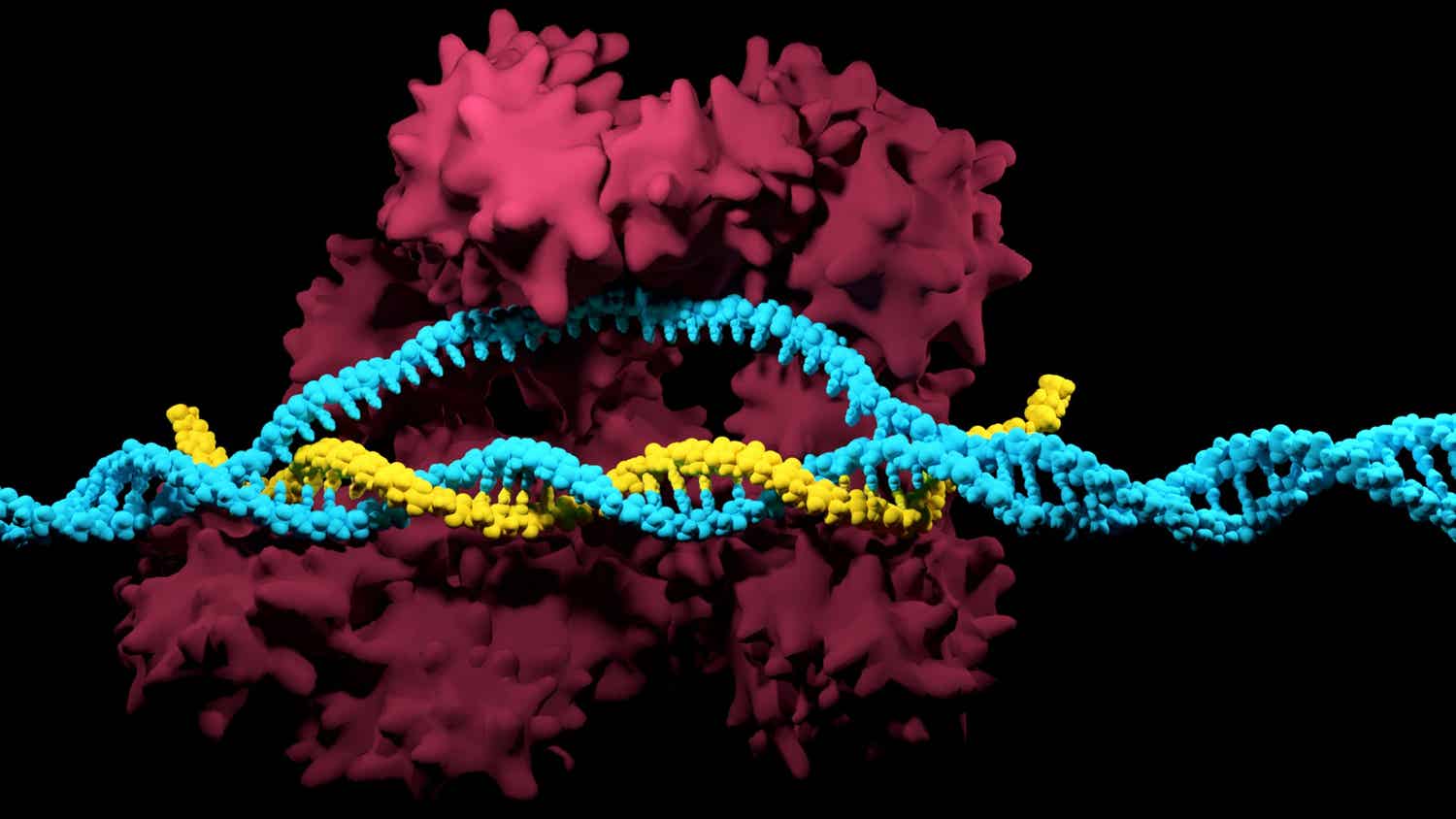The CRISPR-Cas9 system has revolutionized the field of genome engineering with limitless applications in disease therapeutics, drug discovery, agriculture, biofuels, and much more.

- Chapter 01How To Design Guide RNA for CRISPR
- Chapter 02How to Design CRISPR Guide RNAs with the Synthego Design Tool
- Chapter 03The Complete Guide to Understanding CRISPR sgRNA
- Chapter 04Importance of the PAM Sequence in CRISPR Experiments
- Chapter 05How to Choose the Right Cas Variant for Every CRISPR Experiment
- Chapter 06How to Select the Best CRISPR Transfection Protocol
- Chapter 07How to Pick the Best CRISPR Data Analysis Method for Your Experiment
- Chapter 08Step-by-Step Guide for Analyzing CRISPR Editing Results with ICE
As a scientist, once you have familiarized yourself with the basics of CRISPR, you will be ready to start your own CRISPR experiment.
This might sound easy, but the path to becoming a genome engineer can be tricky. What is the best way to design your RNA guides? Which nuclease is appropriate for your experiment? Is one transfection method better than the other? How do you choose the best CRISPR analysis tool?
All these decisions can be overwhelming, but we are here to help. Welcome to the “How to Use CRISPR” guide, where we will cover all the essentials of a CRISPR experiment, starting with designing your RNA and continuing all the way through analyzing your data. On the way, we will give you a few handy tips and warn you about potential pitfalls. So buckle up; it’s a long ride ahead!
How Does the CRISPR-Cas System Work?
CRISPR is the coolest technology in a biologist’s toolbox because of its unique blend of being extremely powerful yet relatively simple to use. The technique relies on two basic components: a Cas nuclease that cuts the DNA and a guide RNA that tells the nuclease precisely where in the genome to cut.
The best way to approach any challenge is to break it down into smaller steps. Broadly speaking, every CRISPR experiment can be divided into three main steps:
- Design - Ensure that you select the optimum guide RNA and other components for your experiment
- Edit - Introduce the CRISPR components into cells to allow the genome engineering to occur
- Analyze - Verify the effectiveness of your experiment and move on to the next steps
Step 1: Design the CRISPR sgRNA
The first step in your CRISPR experiment is to design the customizable guide RNA to target your DNA sequence. The specificity of the guide RNA will greatly influence the success of your CRISPR experiment, as any unintentional binding to random sites could have detrimental effects on the cell.
The following chapters cover the Design step:
Chapter 1: How to Design Guide RNA for CRISPR
Chapter 2: How to Use Synthego’s CRISPR Design Tool
Chapter 3: What is sgRNA?
Step 2: Edit DNA Precisely with CRISPR
Once the sgRNA is designed and synthesized, you can precisely edit the desired DNA sequence in any genome... right after you have chosen the appropriate CRISPR nuclease. Gone are the days when CRISPR experiments automatically meant using the Cas9 nuclease. Now, depending on the application and specific experimental needs, a variety of alternative nucleases exist. Plus, you need to ensure that the sequence you want to edit contains the PAM sequence that the nuclease absolutely needs to cut. Last but not least, after all CRISPR components have been selected, one more choice remains. What is the best delivery system to introduce the CRISPR components into the cell?
The following chapters will help with the Edit step:
Chapter 4: Importance of the PAM Sequence in CRISPR Experiments
Chapter 5: How to Choose the Right Cas9 Variant for Every CRISPR Experiment
Chapter 6: How to Select the Best CRISPR Transfection Protocol
Step 3: Analyze Data from CRISPR Experiment
The last step in the CRISPR workflow is to analyze the editing efficiency and to determine the DNA sequences at your target region after being edited. You picked the best sgRNA and used an optimum transfection method, and now you need to review the quality of your editing and make plans for what comes next! Choosing an accurate analysis method and using it efficiently are essential factors influencing the success of this step.
The following chapters cover the Analyze step:
Chapter 7: How to Pick the Best CRISPR Data Analysis Method for Your Experiment
Chapter 8: Step-by-step Guide for Analyzing CRISPR Editing Results with ICE
Ready To Have CRISPR Explained?
We understand that taken together all the steps in the CRISPR method can be intimidating. We have therefore created this comprehensive educational guide with detailed chapters on every part of a CRISPR experiment.
If you still have any questions after reading the guide, feel free to contact us to request more information and check out our other resources.